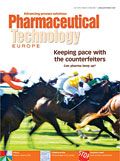News
How India and China are attracting R&D spend from the West.
India and China attracting R&D spend from the West
Drug discovery in India and China is gathering momentum as the regions develop major service capabilities and draw an increasing amount of western pharmaceutical R&D to their shores.
According to a report from GBI Research, Drug Discovery in India and China — Gaining Momentum with Increasing Pressure on Cost Cutting, China and India offer cost savings of 60–70% compared with western territories when it comes to drug discovery. This acts as a major lure for pharma companies in light of the severe financial constraints in Europe and the US, and the fact that discovery research usually accounts for approximately one-third of R&D expenditure.
During the last decade, China and India have developed significant capabilities in drug discovery research, as well as considerable capabilities in Phase I and Phase II clinical trials. The report also adds that many domestic companies in these countries have defined their therapeutic research focus. The top three therapeutic areas are inflammatory diseases, metabolic disorders and cancer; however, there is some variation between the two countries, with Chinese companies focusing on oncology and Indian companies concentrating more on metabolic disorders — primarily diabetes, obesity and dyslipidaemia.
The developments and advances made by China and India's pharma sectors have led to a gradual increase in the number of deals being made over the past few years. For instance, 13 major research deals were made in 2009, compared with 11 in 2008, 9 in 2007 and only 6 in 2006. A number of the deals in China and India have involved Big Pharma companies, including AstraZeneca, Johnson & Johnson, Pfizer and Merck, but there has also been an increase in the number of mid-sized companies making deals, with 10 deals made in 2009, compared with 2 in 2008. According to the report, the growing number of deals suggests "the rising interest of such companies to exploit the cost and quality capabilities" offered by emerging markets. Interestingly, however, although China and India have been building their capabilities in specific therapeutic areas, the majority of deals focused on services.
The challenges
Despite Western pharma's increasing interest in China and India, as well as the countries' growing expertise, there are still challenges that must be overcome. One of the principal issues is the lack of a sufficient talent pool, with many workers in both countries lacking specialised skills and experience — particularly in biology and chemistry services. Another problem, which varies slightly between China and India, relates to funding. Although China has considerable government support, a large part of the money goes to government funded research institutions and universities. Meanwhile in India, the government has adopted a public–private partnership model, which it believes will encourage pharmaceutical innovation. However, the main beneficiaries will be small pharma companies and institutes affiliated with India's Council of scientific and Industrial Research. Additionally, there can be problems with venture capitalists in both countries, which tend to be particularly risk-averse when it comes to investing in early stage R&D activities.
In spite of these challenges, India and China will continue to hold appeal and, at least for the foreseeable future, will be vying for an increasing share of Western pharma's R&D budgets.
News bites
Pfizer cuts 6000 jobs
Pfizer has begun implementing the first phase of its Plant Network Strategy, which will result in the loss of approximately 6000 jobs over the next several years. The strategy includes recommendations to cease operations at eight manufacturing sites by the end of 2015.
Read more at: www.pharmtech.com/pfizerjobcuts
Generics and hybrids underestimated
Fifty percent of the marketing authorisation applications for human medicines submitted to the EMA in 2009 were for generic and hybrid medicines — 60% higher than the agency's forecast, according to the EMA's 2009 annual report.
Read more at: www.pharmtech.com/underestimated
Quality concerns at J&J
The FDA has testified about J&J's recall of certain children's medications and has also expressed quality concerns regarding the company's McNeil Consumer Healthcare division. The FDA claims there have been a number of unsatisfactory inspections and product recalls in recent years.
Read more at: www.pharmtech.com/qualityconcerns
Was swine flu overrated?
The handling of the H1N1 pandemic by the WHO, EU agencies and national governments led to a waste of public money and unjustified fears, according to a report released by the Council of Europe. One of the main concerns was the possible influence of the pharma industry on some of the WHO's key decisions.
Read more at: www.pharmtech.com/h1n1overrated

Transformations in Drug Development for Cell and Gene Therapies
March 28th 2025As a recognized leader in immunophenotyping for clinical trials, Kevin Lang from PPD discusses how spectral flow cytometry is transforming drug development, particularly in cell and gene therapies like CAR-T. He also dives into his award-winning research, including his 2024 WRIB Poster Award-winning work, and his insights from presenting at AAPS PharmSci360.
Advancing Clinical Trials with Spectral Flow Cytometry: A Conversation with Kevin Lang
March 28th 2025As a recognized leader in immunophenotyping for clinical trials, Kevin Lang from PPD discusses how spectral flow cytometry is transforming drug development, particularly in cell and gene therapies like CAR-T. He also dives into his award-winning research, including his 2024 WRIB Poster Award-winning work, and his insights from presenting at AAPS PharmSci360.
Pharmaceutical Tariffs Are Imminent: How Industry is Bracing for Impact
April 16th 2025On April 14, 2025, the Trump Administration launched a national security-driven investigation into pharmaceuticals, a move that will likely result in tariffs being placed on pharmaceutical drugs, ingredients, and other components that are imported from outside of the United States.